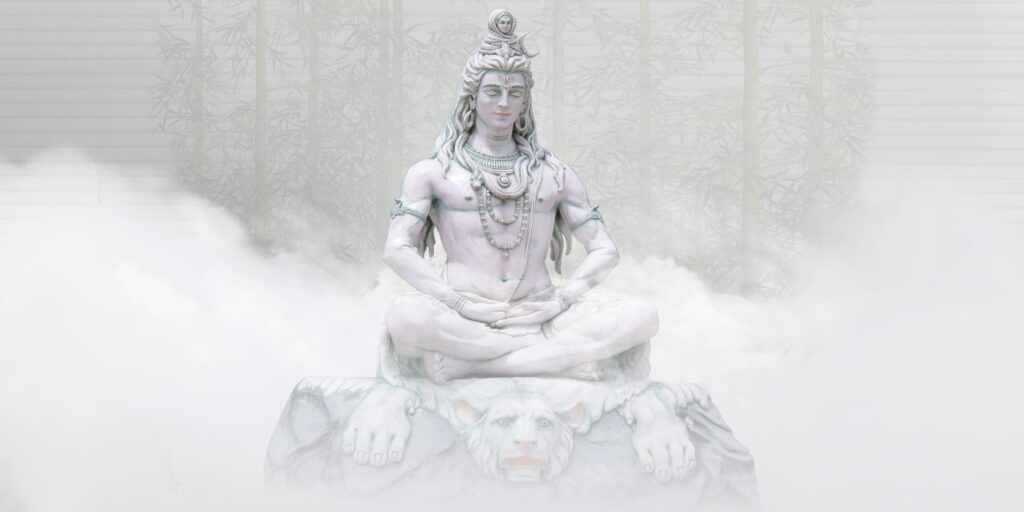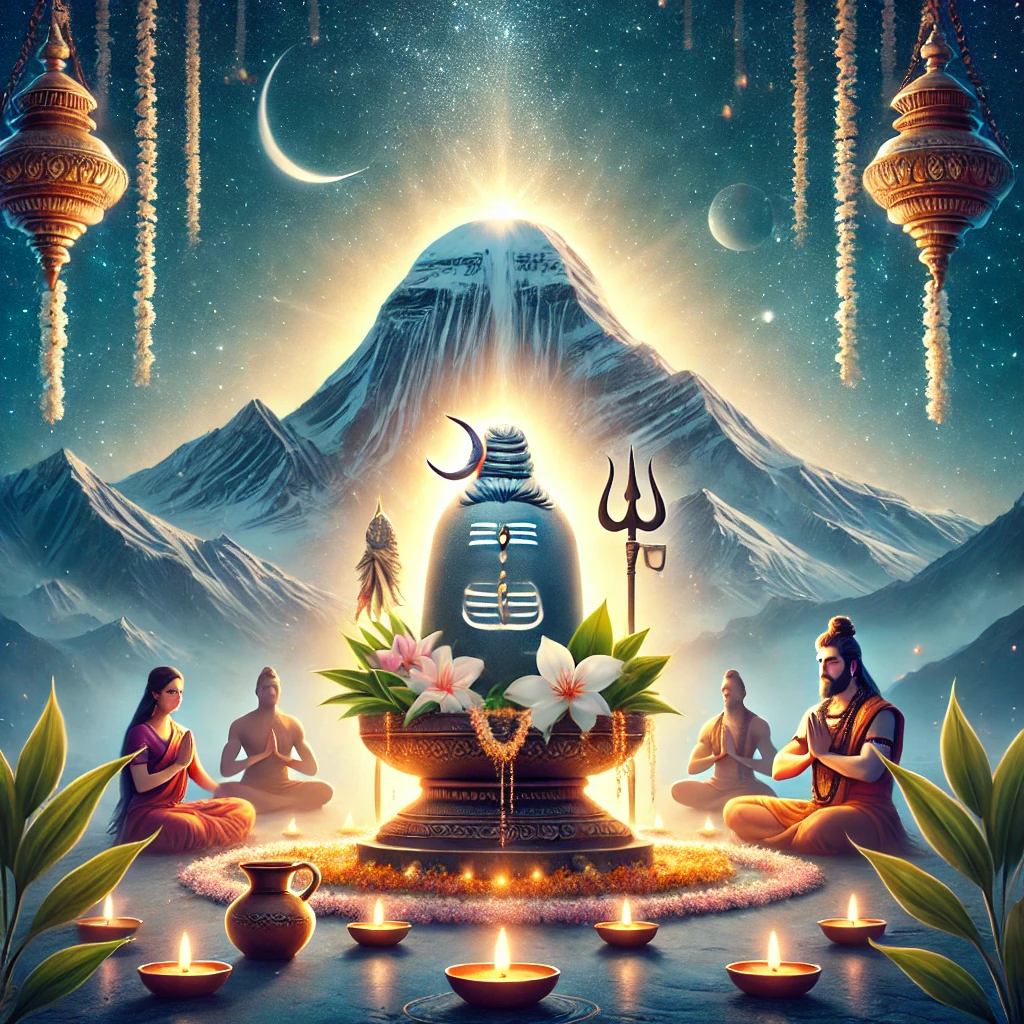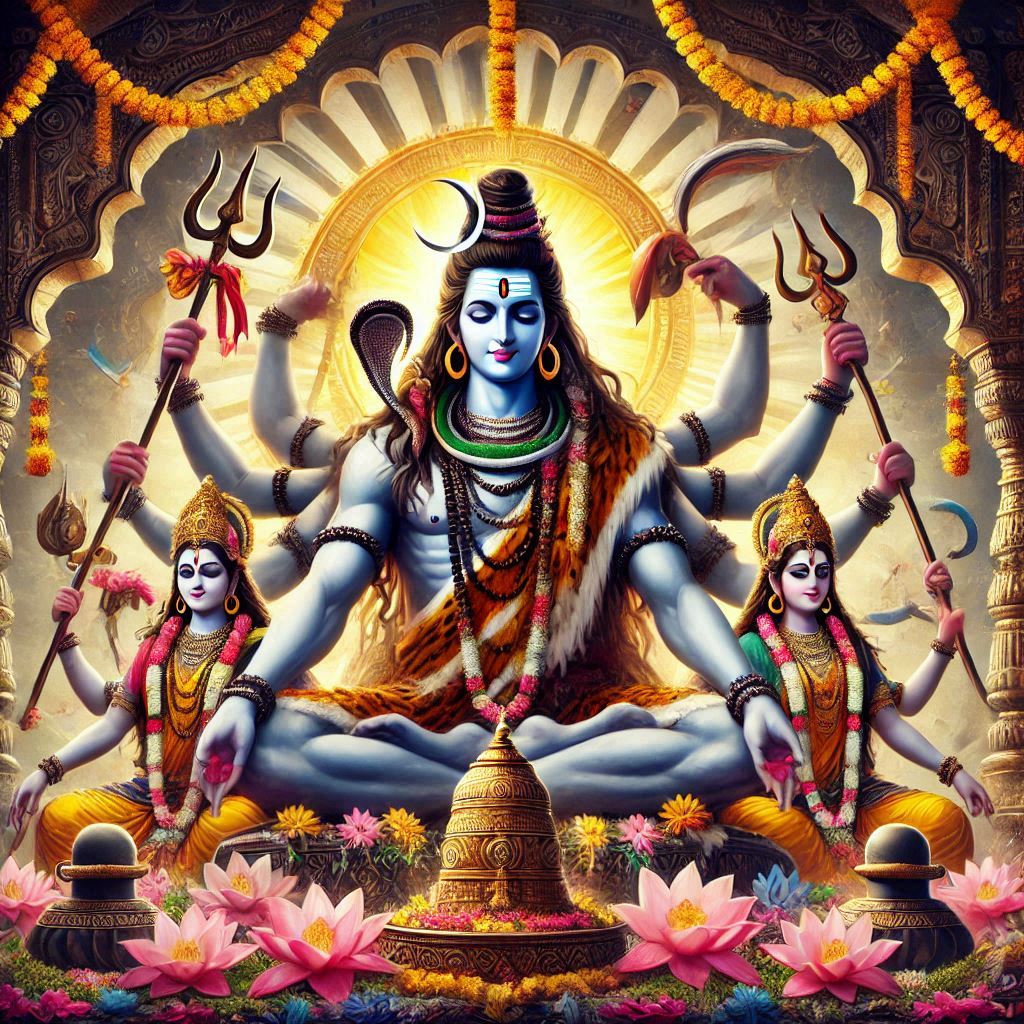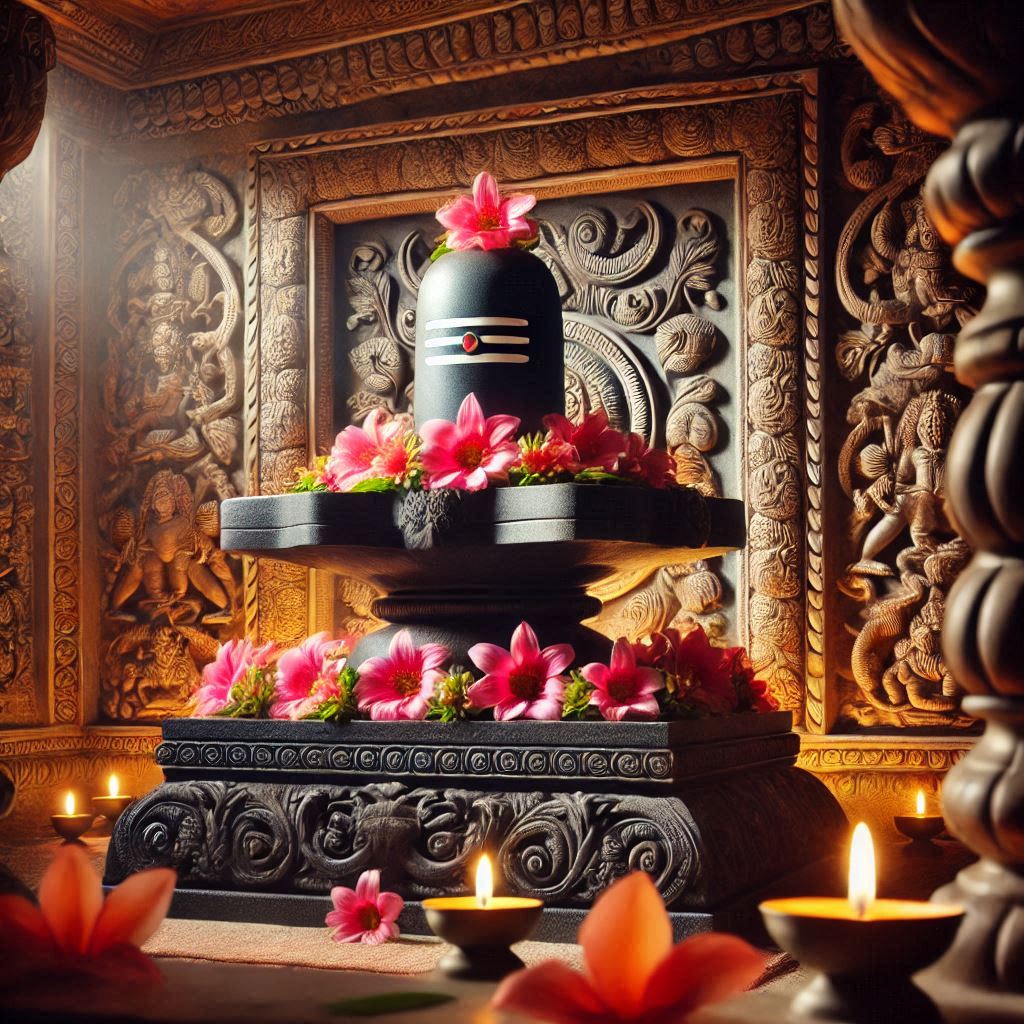Maha Shivratri 2025: Date, Timings, and Significance
Introduction
Translating as “The Great Night of Shiva,” Maha Shivratri is among the most important holidays in Hinduism.Celebrated yearly, it honors Lord Shiva, the god representing destruction and rebirth.Maha Shivratri will be observed on Wednesday, February 26 in 2025 by pilgrims all around.This holy event presents chances for spiritual introspection, dedication, and the search of inner serenity.
Significance of Maha Shivratri
In Hindu tradition, Maha Shivratri is very significant since it honors the divine union of Lord Shiva and Goddess Parvati, therefore attesting to the harmony of male and feminine forces.This event reminds us of the cyclical character of the cosmos and the ongoing process of rebirth since it is thought to be the night Lord Shiva executed the Tandava, his cosmic dance of creation, preservation, and destruction.
Date and Puja Timings for Maha Shivratri 2025
Here are the crucial times for Maha Shivratri, which will take place on February 26, 2025, for those who are going to adhere to the rituals:
- - Chaturdashi Tithi Begins: 11:08 AM on February 26, 2025
- - Chaturdashi Tithi Ends: 8:54 AM on February 27, 2025
- - Nishita Kaal Puja Time: 12:08 AM to 12:57 AM on February 27, 2025
- - Ratri First Prahar Puja Time: 6:28 PM to 9:30 PM on February 26, 2025
- - Ratri Second Prahar Puja Time: 9:30 PM to 12:32 AM on February 27, 2025
- - Ratri Third Prahar Puja Time: 12:32 AM to 3:34 AM on February 27, 2025
- - Ratri Fourth Prahar Puja Time: 3:34 AM to 6:37 AM on February 27, 2025
- - Shivaratri Parana Time (Breaking the Fast): 6:37 AM to 8:54 AM on February 27, 2025
These timings are crucial for performing the rituals at the most auspicious moments, enhancing the spiritual benefits of the observance.
Preparations for Maha Shivratri Puja
Observing Maha Shivratri involves meticulous preparation to ensure a spiritually enriching experience.
1. Purification
Starting the day with a purifying bath at dawn represents the mental and physical cleanliness.Wearing neat, ideally white, clothing is advised to indicate purity.
2. Sanctifying the Puja Area
Choose for the puja a quiet, spotless area in your house.Set up a platform and set a Shiva Lingam—an icon of Lord Shiva—on top.To provide a calm atmosphere, decorate the space with flowers—especially white and red—as well as light oil lamps.
3. Gathering Puja Samagri (Materials)
Ensure you have the following items for the puja:
- - Shiva Lingam or Idol: The central focus of the worship.
- - Gangajal (Holy Water): For purification and Abhishekam (ritual bathing).
- - Panchamrit: A sacred mixture of milk, yogurt, honey, ghee, and sugar.
- - Bel Patra (Bilva Leaves): Considered highly auspicious for Lord Shiva.
- - Dhatura and Bhang: Traditional offerings associated with Shiva
- - Sandalwood Paste: For applying tilak on the deity.
- - Incense Sticks and Lamps: To purify the environment.
- - Fruits and Sweets: As offerings to the deity.
- - Vibhuti (Sacred Ash): To apply on the forehead, symbolizing purity.
Having these items ready will facilitate a smooth and focused worship experience.

Performing the Maha Shivratri Puja
The puja is typically conducted during the night, divided into four quarters, each with specific rituals.
1. First Quarter (6:28 PM to 9:30 PM)
- - Abhishekam: Bathe the Shiva Lingam with Gangajal, followed by Panchamrit, and then again with water.
- - Offering Bel Patra: Place fresh Bilva leaves on the Lingam, chanting “Om Namah Shivaya.”
- - Lighting Lamps and Incense: Illuminate the surroundings with oil lamps and incense sticks to invoke divine presence.
2. Second Quarter (9:30 PM to 12:32 AM)
- - Chanting Mantras: Recite the Maha Mrityunjaya Mantra and other Shiva stotras with devotion.
- - Offering Fruits and Sweets: Present seasonal fruits and homemade sweets to the deity.
- - Meditation: Spend time in silent meditation, focusing on Lord Shiva’s attributes.
3. Third Quarter (12:32 AM to 3:34 AM)
- - Applying Sandalwood Paste: Adorn the Lingam with sandalwood paste, symbolizing purity.
- - Offering Dhatura and Bhang: These are traditional offerings, but ensure they are handled respectfully and appropriately.
- - Recitation of Shiva Chalisa: Sing or read the Shiva Chalisa to praise the Lord.
4. Fourth Quarter (3:34 AM to 6:37 AM)
- Final Abhishekam: Perform a concluding ritual bath for the Shiva Lingam with water, Gangajal, or milk. This act signifies the purification and sanctification of the deity.
- Offering Flowers: Present fresh flowers, preferably white or red, to symbolize love and devotion.
- Lighting Diyas: Conclude the puja by lighting diyas around the puja area to signify the presence of divine light.
- Aarti: Perform the final aarti with a deep sense of gratitude and devotion. Chant the aarti song and wave the lit diya in a circular motion before the Lingam.
Observing the Maha Shivratri Fast
Part of the ceremony includes fasting on Maha Shivratri. It helps those who follow Lord Shiva connect with him by cleansing the body and mind. Depending on one’s capacity, the fast can be phalahar—fruit-based—or nirjala, or without water.
- Dos for Fasting:
- Begin the fast with a sankalp (resolution) to dedicate the day to Lord Shiva.
- Consume sattvic food, such as fruits, milk, and nuts, if observing a partial fast.
- Drink water infused with tulsi leaves to stay hydrated and energized.
- Don’ts for Fasting:
- Avoid consuming grains, pulses, or non-vegetarian food.
- Refrain from using garlic, onion, or any tamasic ingredients in preparations.
- Do not overeat during the pre-fast meal (before sunrise) or post-fast meal.
Dos and Don’ts During Puja
To maximize the spiritual benefits, it is essential to follow certain guidelines during the puja.
Dos:
- Bathe early in the morning to cleanse yourself and wear clean clothes.
- Offer fresh Bilva leaves to the Shiva Lingam, as they are considered sacred.
- Chant mantras like “Om Namah Shivaya” with sincerity and devotion.
- Maintain a calm and meditative atmosphere during the puja.
- Light oil lamps and incense sticks to create a spiritual ambiance.
Don’ts:
- Do not offer turmeric or saffron to the Shiva Lingam, as they are traditionally not associated with Lord Shiva.
- Avoid using broken or dried Bilva leaves.
- Do not leave the Shiva Lingam unattended after initiating the puja.
- Avoid unnecessary chatter or distractions during the rituals.
Maha Shivratri: Facts and Legends
The festival is steeped in intriguing myths and fascinating facts.
- The Marriage of Shiva and Parvati: Maha Shivratri celebrates the divine wedding of Lord Shiva and Goddess Parvati. This union signifies the balance of cosmic energies.
- The Night of the Cosmic Dance: According to legend, Lord Shiva performed the Tandava, a dance symbolizing creation, preservation, and destruction, on this auspicious night.
- The Emergence of the Shiva Lingam: It is believed that on Maha Shivratri, the Shiva Lingam appeared as a fiery column of light, representing Lord Shiva’s infinite and formless nature.
- Spiritual Energy: Devotees believe that the planetary positions on Maha Shivratri create a powerful spiritual energy that aids meditation and spiritual growth.
Why Observing Maha Shivratri is Spiritually Significant
Maha Shivratri is a night of intense spiritual awakening not only a celebration. Deducting the evening to prayer, meditation, and devotion helps followers to match the cosmic energy of Lord Shiva.
Known as jagarana, the habit of remaining awake all night marks alertness and self-awareness. It represents reaching spiritual illumination by conquering ignorance. The singing of “Om Namah Shivaya” causes vibrations that resound within and bring harmony and peace.
How to Involve Your Family and Community
Maha Shivratri is a beautiful opportunity to bring your family and community together. Here are some ideas:
- Organize a group chanting session or kirtan to create a collective spiritual atmosphere.
- Participate in community pujas at temples to connect with fellow devotees.
- Share stories of Lord Shiva’s greatness with children, helping them understand the cultural significance.
- Distribute prasad (sacred food) to spread positivity and blessings.
Conclusion: Embrace the Divine Bliss
Maha Shivratri reminds us of Lord Shiva’s great compassion and knowledge. This is the evening to let go of our ego, consider our deeds, and pursue the grace of God.
Prepare to celebrate Maha Shivratri 2025; let the spiritual energy of the night guide you into inner serenity by means of devotion. Lord Shiva’s blessings should make your family and yours happy, healthy, and wealthy.


